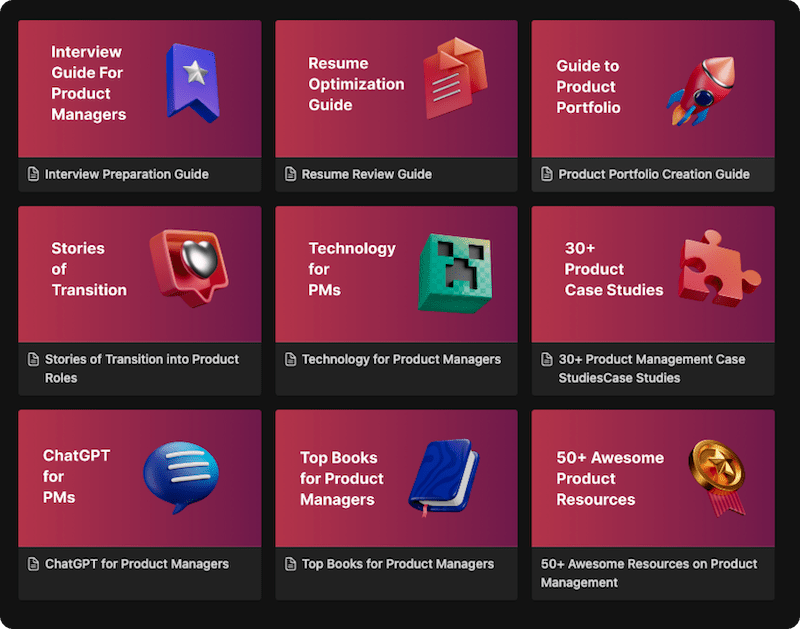As a product manager, you will find yourself taking a lot of critical and not-so-critical decisions at your job. The product management frameworks help you make these decisions and think in a structured way.
No matter whether we talk about their application during the job, or during the product management interview, these frameworks are battle tested and even the most seasoned product folks came back to them often to make better decisions.
Go ahead and supercharge your product management abilities with these top product management frameworks.
5 Whys
Great product managers start every initiative with a strong Why.
5 Whys is an important problem-solving tool, that helps product managers get to the root of the problem at hand. In this approach, we determine the root cause of the problem by repeatedly asking “Why” until the underlying cause is revealed.
An absolutely essential framework for every product manager. Can be practically used for fixing bugs, customer interviews, solving stakeholder conflicts, and root cause analysis.
Understand use cases, how to apply them, and examples in our complete guide for the 5 why’s framework here.
Jobs to be done
People use products to accomplish different jobs in their life.
Jobs to be done is a powerful framework, which helps uncover the underlying motivation of the user behind using any product. The jobs are the goals that the user is trying to achieve in a given context, the job could be functional, social, or even emotional.
To implement jobs to be done, we need to understand the user journey, identify the needs at various steps and articulate them in the form of job statements.
Learn how to use jobs to be done, with practical examples and use cases here.
AARRR – Pirate Framework
Given by Dave Mclure, the AARRR framework breaks down the user journey into 5 important steps namely:
- Acquisition
- Activation
- Retention
- Referral
- Revenue
A super helpful framework to understand the user journey, find the right metrics for each stage and understand how different teams (marketing, product, sales) contribute to a unified customer experience.
Learn about AARRR Product Management Framework in detail here. [To be updated soon]
OKRs
OKRs, or Objectives and Key Results, is a goal-setting framework that helps product teams, individuals, and organizations to set clear, measurable goals and track their progress toward them. The OKR framework was popularized by Intel and later adopted by many successful companies, including Google, Twitter, and LinkedIn.
OKRs consist of two main components: Objectives and Key Results. Objectives are specific, measurable goals that an individual or organization wants to achieve. Key Results are the specific, measurable outcomes that define success for each objective.
You can learn about the actionable implementation details here [To be updated soon], and if you want to deep dive really into OKRs, you can consider reading the popular book Measure What Matters.
MOM’s Test
Every product manager needs to know how to ask the right questions to their users. The MOM’s test gives a solid set of principles to follow while gathering feedback or validation around your product.
The key takeaways are:
- Talk about your user’s life rather than your product idea
- Be wary of opinions, and appreciation.
- It’s better to fail during the validation rather than after creating the whole product.
Read our ultimate guide on implementing MOM’s test in your product management work. [To be updated soon]
BJ Foggs Model
When so many best-selling books are based on a framework, you know it works.
BJ Fogg’s model helps us understand the reasons behind people’s behavior and can be used to create habits around your products and increase their usage.
The model gives an important equation of B = MAT, which means:
In order for us to do any behavior (B): We need Motivation (M), the Ability to do that action (A), and a timely trigger (T).
The implementation details and use cases are given in our guide on Creating Habit-Forming Products with BJ Fogg’s model. [To be updated soon]
Popular books like Getting things done, Atomic Habits, Hooked, etc, are based on this fundamental model.
HEART
This analytical framework was put forward by the team at Google.
It helps us improve the user experience and determine the success of a product/feature by diving the experience into 5 parts.
- Happiness
- Engagement
- Adoption
- Retention
- Task Success
We then determine the Goals, Signals, and Metrics across these 5 dimensions to improve user experience.
Read How to implement the HEART framework here. [To be updated soon]
Eisenhower Matrix
Time is the most important resource that any product manager has. However, it’s easy to get bugged down by meetings, unnecessary tasks, and ad-hoc work across your day.
Eisenhower matrix gives you control back and helps you manage your time logically and effectively.
It helps you divide all the work that you have on the scale of IMPORTANCE v/s URGENCY.
This is what it looks like 👇🏽

Get the details of the Eisenhower matrix and other productivity tips for Product Managers in our detailed guide here. [To be updated soon]
Prioritization
Prioritization is one of the most important skills for product managers. No product team has all the resources and time available in the world. Hence choosing what to do it an important skill.
While there are a plethora of product prioritization frameworks, most product managers rely on these three time-tested frameworks Impact v/s Efforts (Simple to use), RICE (a more elaborated version of the former), and the KANO model.
Read about these in our Practical Guide to Prioritization for product managers here. [To be updated soon]
First Principles
The mental model helps you solve problems by breaking them into fundamental insights.
Most of the greatest thinkers tend to think from first principles to avoid bias and think from the ground up.
Many frameworks in product management like 5 Whys, Jobs to be done, and Customer centricity are actually applications of first principles.
Read our exhaustive guide on first principles for product managers here.
A Note for Product Managers
People who are reading this guide should finally keep in mind that these frameworks need to be applied with context. Not every framework that you know can be applied to every situation, and most of the time you might have to combine two or more frameworks and your own problem-solving abilities to take decisions.
Use these frameworks as catalysts to your decision-making and not as crutches for your mind.
 WATCH HELLOPM COHORT IN ACTION
WATCH HELLOPM COHORT IN ACTION



0 thoughts on “Product Management Frameworks – Ultimate Guide with Examples, Templates, and PDF”
Comments are closed.